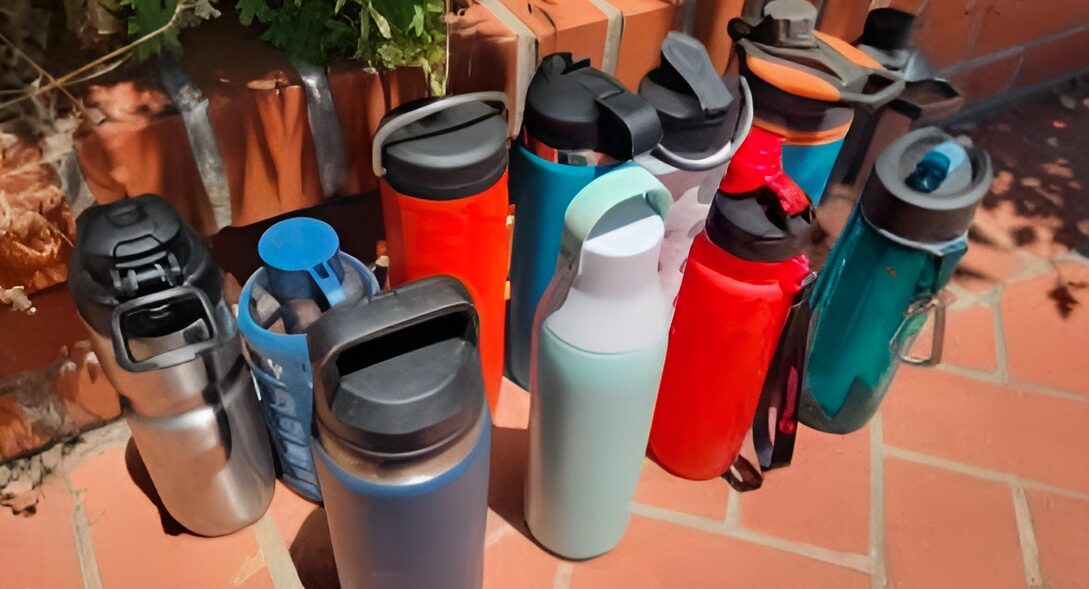Staying hydrated is a fundamental part of daily life, yet the choices we make regarding how we drink water have significant environmental impacts.
Single-use plastic bottles have become a global problem, contributing massively to plastic waste. It’s a habit many of us don’t think twice about, but the environmental cost of constantly purchasing bottled water is high.
Sustainable hydration is becoming increasingly important as people realize the long-term effects of plastic pollution. By opting for eco-friendly alternatives, we can reduce the demand for disposable plastic bottles and minimize our environmental footprint.
In this article, we’ll explore how choosing the right water bottle can make a big difference in reducing plastic waste and promoting a more sustainable lifestyle.
The Plastic Problem: Why Single-Use Bottles Are a Concern
Single-use plastic bottles are among the most common contributors to global plastic pollution. These bottles are used for just a few minutes, but their environmental impact lasts much longer. Plastic bottles take hundreds of years to decompose, and much of it ends up in landfills or the ocean, harming wildlife and ecosystems.
Recycling is often thought of as the solution, but it’s not as effective as we might hope. Only a fraction of plastic bottles are actually recycled, and the process of recycling can be complicated and inefficient.
In addition, microplastics, tiny fragments of plastic, are now found in our water sources, posing a hidden threat to both human health and aquatic life.
Consumer habits play a huge role in this issue. The constant purchase and disposal of plastic bottles are major contributors to the growing plastic crisis. Understanding the impact of these actions is a first step in making more conscious decisions about hydration.
Understanding Sustainable Water Bottles: What to Look For
When it comes to choosing a sustainable water bottle, the term “sustainable” refers to a product that is durable, reusable, and produced in an eco-friendly way. Key factors include the materials used, the bottle’s lifespan, and the methods used to manufacture it.
A truly sustainable bottle should reduce the need for single-use plastic bottles and be made with minimal environmental impact.
Here are a few things to look for when evaluating the sustainability of a water bottle:
- Durability: A high-quality bottle should last for years, reducing the need for constant replacements.
- Reusability: The more you can use your bottle, the less waste you generate. Look for bottles that are designed for repeated use.
- Eco-friendly production: Consider how the bottle is made. Is it produced with renewable resources? Are the manufacturing processes environmentally responsible?
Understanding these key points will help you make an informed decision when choosing a water bottle that fits your sustainable lifestyle.
Choosing the Right Material: Glass, Stainless Steel, or BPA-Free Plastic?
The material of your water bottle plays a significant role in its sustainability. Here’s a breakdown of the pros and cons of three common materials: glass, stainless steel, and BPA-free plastic.
- Glass: Glass bottles are durable and non-toxic, but they can be heavy and fragile. They are a great choice for those looking for a safe, reusable option, and they don’t leach chemicals into the water. However, the production process of glass can be energy-intensive.
- Stainless Steel: Stainless steel bottles are lightweight, durable, and great for insulation. They can keep your drinks cold or hot for hours. However, they may be more expensive and require careful cleaning to avoid build-up. The manufacturing process of stainless steel is also resource-intensive but generally more sustainable than plastic.
- BPA-Free Plastic: BPA-free plastic is lightweight and more affordable, but it may not last as long as glass or stainless steel. Even though it’s free from BPA (a harmful chemical), plastic bottles can still leach other chemicals, and they’re more likely to break down over time.
When choosing a bottle, consider factors such as durability, weight, and how often you plan to use it. Stainless steel and glass are typically the most eco-friendly options due to their longevity and recyclability.
Making a Bigger Impact: Reducing Waste Beyond the Bottle
While choosing a sustainable water bottle is an important step, reducing plastic waste goes beyond just the bottle itself. Here are a few habits that can help you make an even bigger impact:
- Use filtration systems: Instead of buying bottled water, consider using a water filtration system at home. This can help reduce the need for purchasing bottled water and lower your plastic consumption.
- Carry your own bottle: Always have your reusable bottle with you, whether you’re commuting, working, or traveling. This simple habit reduces the demand for single-use plastic bottles.
- Encourage others: Spread the word about sustainable hydration. Encourage friends, family, and coworkers to make the switch to reusable bottles. The more people that adopt sustainable habits, the bigger the collective impact.
Every little change you make contributes to reducing the plastic waste problem, and small actions can lead to significant environmental benefits.
Are Smart Water Bottles Worth It?
Smart water bottles are an emerging trend, and many people wonder if they’re worth the investment. These bottles come with features like hydration tracking, temperature control, and reminders to drink water.
While they might offer some tech perks, it’s important to consider whether they’re truly sustainable.
Pros of smart water bottles:
- Hydration tracking: Some bottles can track how much water you’ve consumed, reminding you to stay hydrated throughout the day.
- Temperature control: Some smart bottles can keep water at your preferred temperature for hours.
Cons of smart water bottles:
- Battery usage: Many smart bottles require batteries or charging, adding to their environmental footprint.
- More plastic: Depending on the brand, these bottles may still be made from plastic or other non-sustainable materials.
Smart water bottles can be a good option for tech-savvy individuals who need hydration reminders, but if sustainability is your primary concern, you may prefer a more traditional, reusable bottle without the added gadgets.
This water pitcher can be a suitable alternative if you are someone who is looking for a system that can hydrogenate and heat water at the same time. It is not only sustainable as it is made of glass but also a healthier alternative for people who are looking to get more out of their water.
Conclusion
Making sustainable hydration choices doesn’t require a major overhaul of your lifestyle. By switching to a reusable, eco-friendly water bottle, you’re already making a significant difference.
Small habits, like using filtration systems, carrying your own bottle, and encouraging others to do the same, all add up to a meaningful reduction in plastic waste.
The key is to make hydration a sustainable habit, one that helps the planet while also supporting your well-being. Remember, the best bottle is the one you’ll use consistently, and the most important choice is the one to make a positive environmental impact.



































